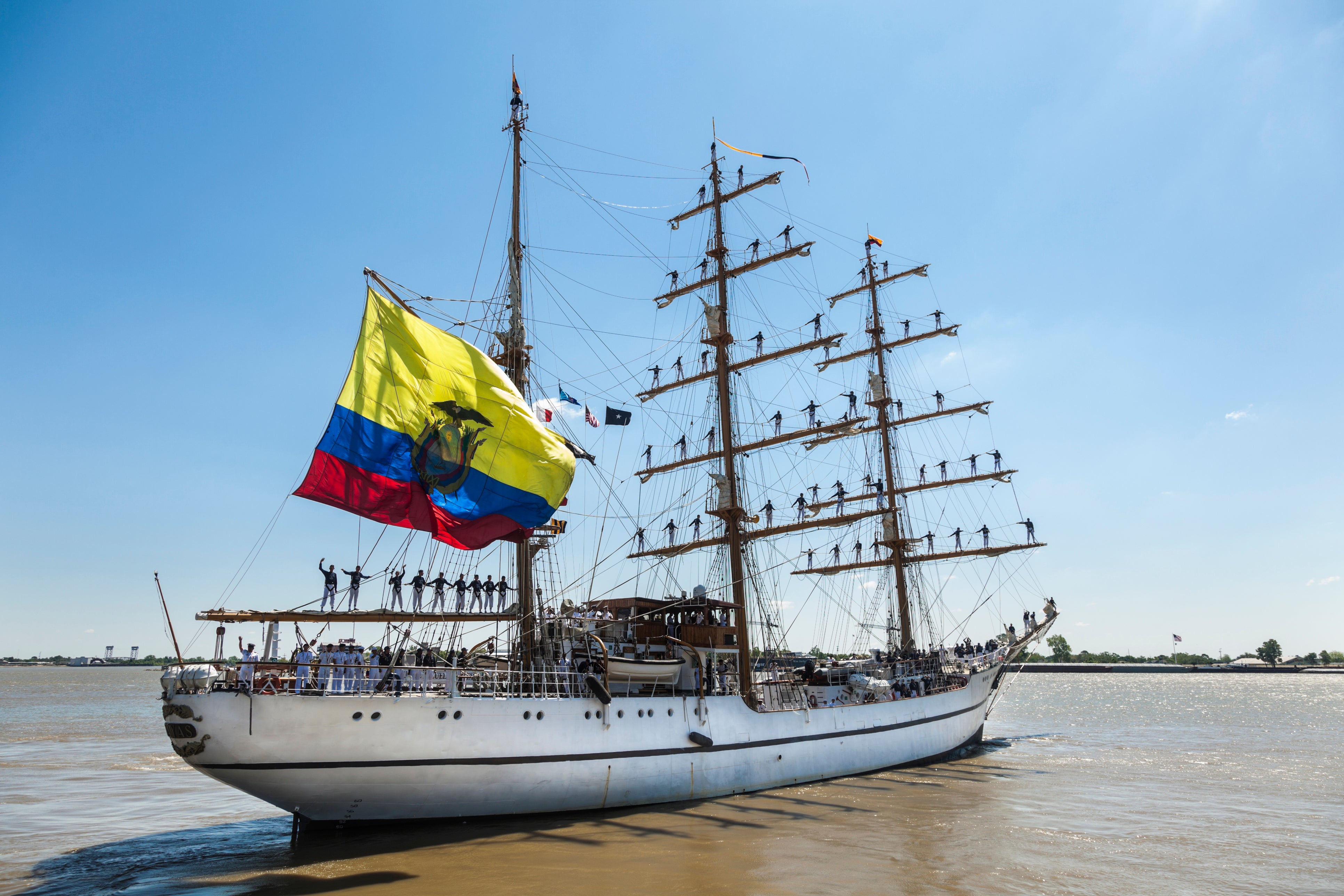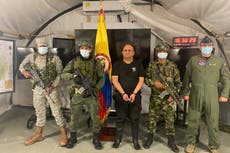Narco sub captured off Colombia coast by 18th century-style sailing ship
Three Ecuadorians and one Colombian arrested after Ecuadorian Navy training ship intercepted and captured high-speed drug smuggliing vessel

A three-masted sailing ship has intercepted and captured a high-speed narco sub smuggling illegal drugs off the coast of Colombia.
The Ecuadorian Navy announced that its tall training ship Guayas caught the smuggling vessel on Friday while it was in international waters between Colombian territory and the Ecuadorian islands in the Pacific.
The capture took place within just 200 nautical miles of the Colombian exclusive economic zone.
Four crew members, three Ecuadorians and one Colombian, on board the sub were arrested and the vessel was seized. It is now en route to authorities in Ecuador.
The military did not provide any details on the type or quantity of narcotics found on board the vessel, reported CNN.
The Ecuadorian military said the Guayas had been conducting a training exercise at the time when it noticed the smuggling vessel in the waters.
Narco subs, also known as low-profile vessels, are commonly used by drug cartels to smuggle narcotics from Colombia to Central America, before they are transported north into the US.
The vessels are purposely difficult to both track down and capture due to their high speeds and low setting in the water.
The ship’s bulk is typically beneath the waterline and, for the most advanced, it is almost completely submersed with only hatch and air intakes above the waterline.
This can make the vessel undetectable to sight as well as to radar, sonar and infrared systems, posing a challenge for drug enforcement agencies.
Meanwhile, the Guayas is a three-masted ship built used to train naval cadets to sail.
At 257-foot-long (78 meter) with more than 15,000 square feet (1,393 square meter) of sails hanging from three masts, it is designed to carry 80 cadets and a permanent crew of 36.
While this ship was built in 1977, the design is more typical of 18th- and 19th-century style sailing ships than the steam-powered military boats most commonly used today.
But Alessio Patalano, professor of war and strategy at King’s College in London, told CNN this traditional design and sailing is what enabled the Ecuadorian military to outwit the drug smugglers.
“Sailors train regularly to man this ship to the utmost of its capabilities, which means that on favourable weather conditions its sails could propel it well past 10 knots,” Professor Patalano said.
“Whilst this is not a speed comparable to modern ships, when combined with a proficient crew, it would certainly give the ship an edge over four narcos on a home made drug-carrying raft, fast as it could have been.”
Join our commenting forum
Join thought-provoking conversations, follow other Independent readers and see their replies
Comments


Bookmark popover
Removed from bookmarks